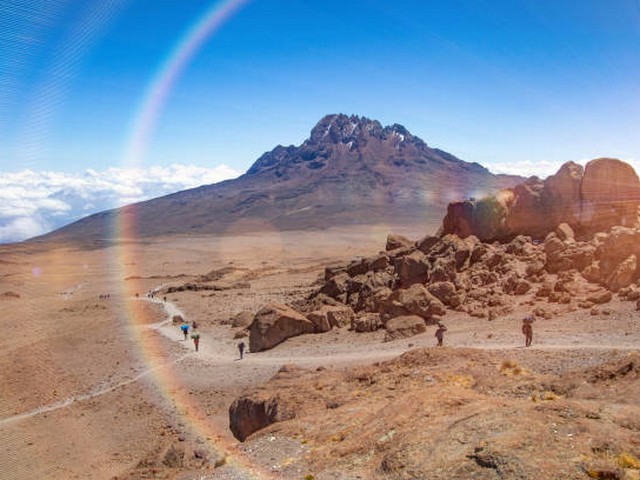How To Offset Your Carbon Footprint On Kilimanjaro Climbs
Standing majestically as the tallest peak in Africa, Mount Kilimanjaro calls to both the adventurous spirit and the eco-conscious heart. At Kilimanjaro Centre for Trekking and Ecotourism (KCTE), we understand that climbing this iconic mountain is a dream for many. However, in the age of environmental awareness, it’s crucial to consider the ecological footprint of such an expedition. In this blog post, we’ll explore innovative and effective ways you can offset your carbon footprint while enjoying the climb of a lifetime on Mount Kilimanjaro.
Embracing Sustainability on Your Climb
Understanding Your Impact
Every adventure into nature, particularly something as significant as climbing Kilimanjaro, inevitably has an environmental impact. From the flight to Tanzania to the resources used during the climb, each step comes with a carbon cost. But the good news is, it’s possible to mitigate these effects through thoughtful, sustainable practices.
Travel Smart
Choose Eco-Friendly Travel Options
Consider airlines that offer carbon offset programs, which invest in environmental projects to balance out the emissions of your flight. Once in Tanzania, opt for shared transportation to the mountain base, reducing the number of vehicles on the road.
Pack Light and Eco-Friendly
Reduce Load, Reduce Impact
Every kilogram counts when it comes to the fuel used by vehicles transporting your gear to the base camp. Packing light not only eases your trek but also reduces carbon emissions.
Sustainable Gear Choices
Invest in high-quality, durable trekking gear from brands committed to sustainability. Items like solar-powered chargers, biodegradable soap, and refillable water bottles make a significant difference in reducing waste.
On the Trail: Sustainable Trekking Practices
Stick to the Path
Minimizing soil erosion is crucial. Stick to marked trails and avoid shortcuts to preserve the mountain’s delicate ecosystems.
Waste Management
Carry out what you carry in. Use biodegradable bags for waste and ensure you leave no trace at campsites. KCTE supports waste recycling initiatives and encourages all climbers to participate in keeping Kilimanjaro pristine.
Water Conservation
Water resources on Kilimanjaro are limited. Use water sparingly and consider using water purification tablets instead of buying bottled water.
Support Local Communities
Choose Responsible Tour Operators
When you book your climb with Kilimanjaro Centre for Trekking and Ecotourism (KCTE), you’re choosing a partner deeply committed to local communities and sustainable practices. We ensure that our operations benefit the local economy without harming the environment.
Engage with Local Initiatives
Participate in or contribute to community projects that focus on sustainability. Whether it’s reforestation or supporting local clean energy projects, your engagement helps offset the impacts of your climb.
Carbon Offsetting
Invest in Carbon Credits
To directly offset the emissions from your trip, consider purchasing carbon credits through verified schemes. These credits support projects like renewable energy, forestry, and conservation, contributing to a reduction in global carbon emissions.
Plant Trees
Join KCTE’s tree-planting initiatives on Kilimanjaro. Planting trees is a powerful way to contribute to carbon sequestration and help restore the natural landscapes that make Kilimanjaro so special.
Engage and Educate
Share Your Journey
Inspire others by sharing your sustainable climbing experience. Social media is a powerful tool to spread awareness about eco-friendly practices on Kilimanjaro.
Continuous Learning
Stay informed about sustainability and conservation challenges facing Kilimanjaro. The more you know, the more effectively you can contribute to preserving this world heritage site for future generations.
Summary: Your Call to Action
Climbing Kilimanjaro is an unforgettable experience, and by taking steps to offset your carbon footprint, it becomes not only an adventure but also a contribution to the planet. At Kilimanjaro Centre for Trekking and Ecotourism (KCTE), we’re dedicated to ensuring that every step you take on the mountain contributes to safeguarding it for the future.
Plan your sustainable climb with us today, and let’s reach the summit responsibly.
FAQ
How effective are carbon offsets?
Carbon offsets compensate for your emissions by funding equivalent carbon dioxide savings elsewhere. While they are not a cure-all, they are a practical tool for making your travels more sustainable.
Can I monitor the impact of my efforts?
Yes, through programs like KCTE’s sustainability initiative, you can see tangible results of your efforts, such as the number of trees planted or the amount of waste recycled.
Is sustainable trekking more expensive?
Sustainable practices can sometimes come at a premium; however, investing a little more ensures that you’re preserving the beauty and integrity of nature for future climbers.
How can I ensure my trek is eco-friendly?
Choosing responsible tour operators like KCTE, who prioritize sustainability, is the first step. Following eco-friendly practices during your climb is also crucial.
Start planning your responsible trek today, and take a step towards making your adventure a positive force for the environment! Join us at KCTE, where every journey to the clouds begins with a commitment to the earth.




